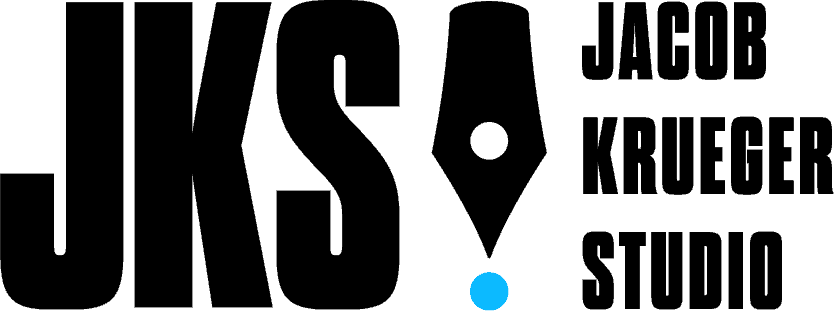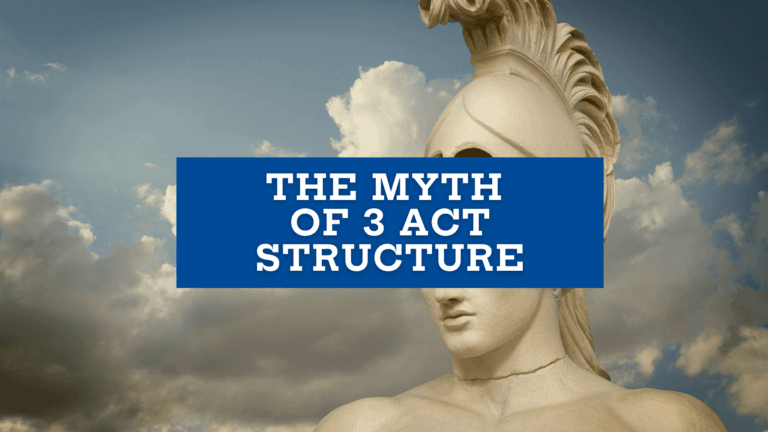[spb_text_block title=”PODCAST – La La Land: Form = Function” pb_margin_bottom=”no” pb_border_bottom=”no” width=”1/1″ el_position=”first last”]
La La Land: Form = Function
By Jacob Krueger
[/spb_text_block] [divider type=”standard” text=”Go to top” full_width=”no” width=”1/1″ el_position=”first last”] [spb_text_block title=”La La Land” pb_margin_bottom=”no” pb_border_bottom=”no” width=”1/1″ el_position=”first last”]
La La Land: Form Equals Function
They say if you want to get along with your friends, there are two things you should avoid discussing: politics, and La La Land.
But if you want to have an interesting discussion about what the future of storytelling is going to look like, these are exactly the things you want to talk about.
So, after breaking the first rule last week with a political podcast, I’m going to break the second one this week by talking about La La Land.
It’s hard to remember a movie as polarizing as La La Land for both audiences and critics.
And what’s interesting is that the split didn’t happen just along “I love Musicals” or “I hate Musicals” lines.
La La Land is tied with All About Eve and Titanic for the most Oscar Nominations in history. More than Gone With The Wind. More than Casablanca. More than The Godfather. More than Citizen Kane.
Compared to film musicals to which it pays homage, it has 2 more nominations than My Fair Lady, 6 more than An American in Paris, 9 more than The Umbrellas of Cherbourg, 11 more than Funny Face and Sweet Charity, and 12 more than Singin’ in the Rain, which the American Film Institute considers the greatest musical ever made.
Yet despite its tremendous crossover appeal among audiences and critics on both sides of the “I Love Musicals” and “I hate Musicals” lines, La La Land seems to have an equal ability to inspire rage in its audiences.
Critic Kyle Smith of the NY Post recently wrote an article entitled Academy Embarrasses Itself With 14 La La Land Nominations.
Jazz artists have turned up their noses at Ryan Gosling’s character, Sebastian’s, conservative notions of what Jazz should be. Others have dismissed the idea of a jazz movie devoid of politics, and starring a white guy as the standard bearer of Jazz tradition, as anywhere from trifling to downright troubling, especially considering the involvement of many of Jazz’s most famous artists, such as John Coltrane and Charles Mingus, in the civil rights movement.
Audiences have complained about everything from the arc the relationship of Emma Stone’s and Ryan Gosling’s characters, to the quality of the score and their ability to sing and dance it.
And some people just downright hated it.
Which all goes to show that if you want to do something great, you’re going to have to piss some people off.
That’s not to say that I actually liked La La Land. Personally, though I was deeply moved by the ending, I didn’t really enjoy the journey that got me there. I found its homages to great musicals more derivative than nostalgic. I found Mia’s uncompromising tear down of Sebastian for “not pursuing his dreams” in the midst of his first step toward artistic success, petty, unnecessary, and downright un-true to her character (especially considering where she was in her own artistic career). It made me not care so much if they ended up together.
I struggled with the unbalanced feeling the movie gave me, as it abandoned the musical structure it established in the first act in favor of a more traditional dramatic format later on.
And, spoiler ahead…
In our modern world of affordable travel and long distance relationships, I still can’t for the life of me figure out what made it necessary for these two to undergo their final break up at the point they did, other than an aversion to Skype and Expedia.
As Sebastian watches a live jazz performance with Mia, he explains to her: “It’s conflict, it’s compromise, and it’s very, very exciting.”
That’s what I wanted from Mia and Sebastian’s relationship. And for me, it was exactly what was missing.
That said, it was the same structural elements that made the film unsuccessful for me that made it so successful with those who loved it.
And that’s what, loved it or hated it, makes it worth looking at as screenwriters.
Because whether you consider the execution of screenplay exciting or not, there’s no doubt that that its structure is truly groundbreaking.
When I was a young writer, still figuring out what I wanted to be, and how to pursue my own artistic dreams as a student at Dartmouth College, I had the opportunity to study American Poetry with a brilliant Professor named Bill Cook.
Bill would always tell us that in great art, Form = Function.
What he meant by that was that the shape of your structure should grow naturally out of the thematic intentions of the author.
In many ways, movies are more like poems than they are like other kinds of writing.
Like poems, screenplays are written in a highly focused format, where literally every word matters. Like poems, screenplays are not just about what happens, but about the rhythm and meter of how it happens. Like poems, screenplays invoke the visual and emotional senses, creating a kind of hypnotic state of hyper-awareness, in which words on the page start to take form and shape in your mind’s eye–playing out as if they were real on that little movie screen in your head.
Like poems, screenplays exist within specific genres and forms with specific rules. And, to be successful, like poems, screenplays must both conform to and break with audience expectations in relation to those rules.
And like poems, in the best screenplays, form = function.
I remember Bill Cook contrasting two poems that most scholars consider among the greatest ever written: The Raven by Edgar Allen Poe, and Do Not Go Gentle Into That Good Night by Dylan Thomas.
Bill was a huge fan of Do Not Go Gentle Into That Good Night. But he savaged The Raven in that lecture.
He savaged it not for its content, not for its story, not for what it accomplished, but for its structure, because he believed its form had no relation whatsoever to its function. Like the structure was something pasted on from the outside to this brilliant material, rather than naturally evolving from what the poet was trying to say.
And whether you agree with him or disagree, his point was definitely interesting:
Here was one of the darkest, scariest poems of all time. But its structure, its rhyme-scheme, was a sing-songy structure that felt, from Bill Cook’s perspective, more suited for a Christmas song than a poem of woe:
“Once upon a midnight dreary, while I pondered, weak and weary”
“While I nodded, nearly napping, suddenly there came a tapping,”
Bill Cook contrasted this with Do Not Go Gentle Into That Good Night, a poem that was built with a kind of structure called a Villanelle, which until that time, had only been used for witty rhymes for children. People who had grown up in Dylan Thomas’ time would have been familiar with the Villanelle from their own childhoods.
So, by choosing that structure, and turning it upside down for this heartwrenching poem about the death of his abusive father, he at once invoked those nostalgic memories of what it was like to be a child, and also turned those emotions inside out and upside down, by using the same form to deliver exactly the opposite emotional experience.
“Do not go gentle into that good night,
Old age should burn and rage at close of day;
Rage, rage against the dying of the light.”
In many ways, La La Land is doing the same thing with its structure. Setting its audiences up from the very first number for a happy, “jazz-hands” kind of musical. A love story for the ages. A wide-eyed romp through Los Angeles on the road to love and stardom.
The musical structure mirrors the dreams of its protagonists– the artistic hopes that brought them to Hollywood, the youthful aspirations for everything their lives would one day be.
The structure is intended to sweep us up, whether we are the jaded Sebastian or the hopeful Mia, into the world of their expectations– of everything that art, and love, and music and life can be. To sweep us into believing, like they do, that this is going to be a happy story.
And then slowly, as a real relationship starts to develop between them, and the real pressures of love, and art, and compromise and stardom start to press on them and change them, that musical structure starts to strip away.
As their romance fades, as their artistic dreams are compromised, so too is the technicolor sparkle of the structure. Big, chorus driven musical-dance numbers give way to naturalistic drama and smokey jazz.
And an interesting thing happens for the audience. Because we’ve been promised a big, happy, romantic musical– because we’ve given ourselves over to the magic of the musical romance– because we’ve seen a million of these stories– we think we know where we are. We think we’re just going through that rough patch in the middle.
We know that everything is going to turn out alright at the end. That we’re going to end with a big happy number that lets us know that love and dreams are both possible– that we can have both of them together.
Which is what makes the ending so devastating.
Because we’re moving one way, and the characters are moving another.
Because we feel the loss, not just of the love story we’ve seen, but of the love story we’ve imagined, based on every other movie in this genre we’ve ever seen in our lives.
Because the structure of the movie exists not to conform to our expectations, but to set us into the expectations of the characters, and make us experience the story in the same way that they experience it.
Oftentimes we think when we’re playing inside of a genre that we are somehow bound to the rules of the conventions as screenwriters– that we’ve got to do the formula, and do it right.
But the truth is, in the movies that defined these genres, the formulas weren’t dictated from on high. Before those first, genre defining movies were written, those formulas didn’t even exist.
Rather, they evolved organically out of the journeys of very specific characters, in very specific stories, out of the worldviews of the writers who created them, out of the movements happening in art and film and theater around them, out of their reactions to the expectations of what movies, or what art, is supposed to be. Out of writers following instincts, rather than the rules, becoming artists, rather than just executors.
You never forget when you see a genre defining movie. And love it or hate it, La La Land is certainly one of them. It’s a movie that reminds us that screenplays don’t have to play by the rules, and don’t have to please everyone, to be hugely successful. A movie that shows us that the future of movies, and the future of musicals, may not just be commerce, but also art.
A movie that suggests that the future of our art form as screenwriters might be a lot like Jazz.
“It’s conflict, it’s compromise, and it’s very, very exciting.”
[/spb_text_block] [blank_spacer height=”30px” width=”1/1″ el_position=”first last”]



